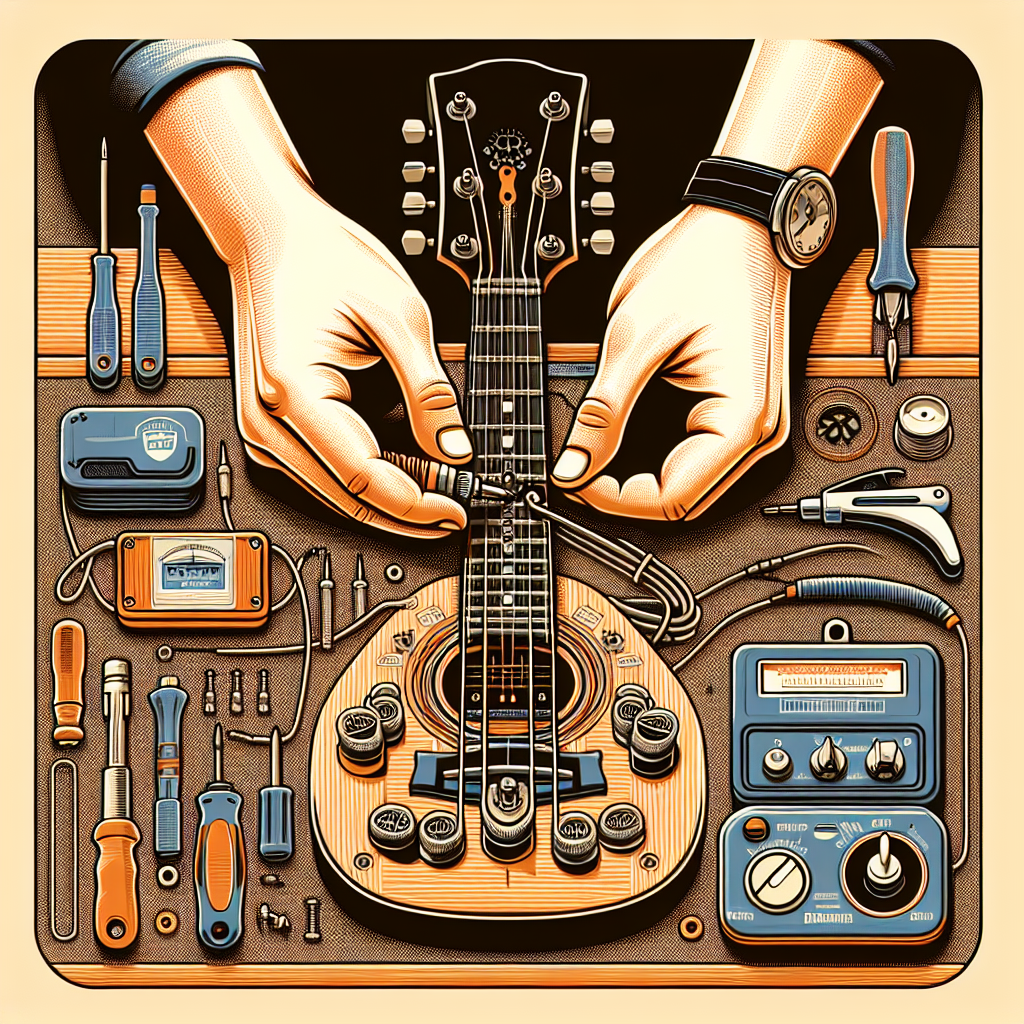
How to Fix a Noisy Input Jack on Your Guitar: 7 Essential Steps to Silence the Buzz
When you’re on stage or practicing at home, there’s nothing more frustrating than dealing with a noisy input jack on your guitar. That unwanted buzz or crackle not only disrupts your playing but can also compromise the overall sound quality. This common issue is typically the result of poor contact or loose connections within the jack itself. Fortunately, you don’t have to be a professional technician to fix this problem. In this comprehensive guide, we’ll explore seven essential steps to help you troubleshoot and repair your guitar’s noisy input jack.
1. Understanding the Problem: What Causes a Noisy Input Jack?
Before diving into the repairs, it’s crucial to understand the root cause of the noise. A noisy input jack usually stems from:
- Loose Connections: Over time, the constant plugging and unplugging can loosen the connections inside the input jack.
- Dirt and Debris: Dust and grime can settle within the jack, interfering with the signal path.
- Worn Contacts: Repeated use can wear down the metal contacts inside the jack.
- Faulty Wiring: Poor solder connections or broken wires can lead to intermittent noise and signal issues.
Identifying the specific cause of the noise will guide you in choosing the most effective solution.
2. Gathering the Necessary Tools
To fix your guitar’s input jack, you’ll need some basic tools:
- A Phillips screwdriver
- A soldering iron and solder (if soldering is necessary)
- Contact cleaner spray
- A small wrench or pliers
- Replacement parts, if necessary (such as a new input jack)
Having these tools on hand will make the repair process smoother and more efficient.
3. Inspecting the Input Jack
Start by examining the input jack:
- Visual Inspection: Look for any obvious signs of damage, such as bent contacts or visible dirt.
- Testing the Connectivity: Use a multimeter to ensure there’s proper continuity when a cable is plugged in.
If you notice any physical damage or irregularities, these need to be addressed first.
4. Cleaning the Input Jack
Dirt and oxidation can disrupt the signal flow. Follow these steps to clean the jack:
Cleaning often resolves minor noise issues without the need for further disassembly.
5. Tightening Loose Connections
If cleaning doesn’t solve the problem, you may need to tighten the connections:
- Remove the jack plate or control cavity cover using a screwdriver.
- Check all connections to ensure they’re secure. Use a wrench to tighten the jack nut if it’s loose.
- Inspect the solder joints. If any wires are loose or broken, re-solder them into place.
Properly secured connections will often eliminate crackling noises.
FAQs
You may need to replace the input jack entirely. Persistent issues often point to internal faults within the jack itself.
Yes, regular cleaning and ensuring your cables are gently handled can help prolong the life of your input jack.
Cleaning it every few months or whenever you notice noise issues is a good practice.
If you are inexperienced, you may want to practice soldering on some spare wires first, or consult a professional.
No, different guitars may have variations in jack design. Make sure to purchase a compatible replacement.
Yes, if the jack isn’t the issue, consider inspecting the cables, volume knobs, and potentiometers.
Conclusion
Experiencing a noisy input jack on your guitar can be frustrating, but with these straightforward steps, you can restore your instrument’s sound quality without a professional repair. Always start with the simplest solutions, such as cleaning and tightening, before escalating to more advanced fixes like soldering or replacement. With regular maintenance and careful use, you can keep your guitar free from unwanted noise and ensure it performs beautifully for years to come.
For further guidance on guitar repairs and maintenance, visit Sweetwater’s guide to guitar repair and maintenance.